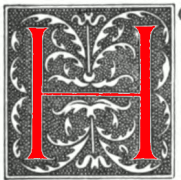
enry Stacy Marks first met John Richard Clayton in 1847 when both were students at Leigh's Art School in Maddox Street in London. The two became friends and Clayton was later to employ Marks for a short period of time in his stained glass works. Initially Marks's job was to convert drawings for stained glass into full-scale cartoons. He also worked successfully for Clayton as a mural painter at churches like All Souls, Halifax. When Alfred Bell withdrew from the firm of Lavers and Barraud in 1855 to join Clayton to form the firm of Clayton and Bell, Marks's services were no longer required.
Clayton therefore arranged for Marks to be hired by Lavers and Barraud to replace Bell. Marks thus became their principal designer for two or three years. He also worked for the firm of James Powell and Sons in 1859 providing designs for at least two locations. After this time Marks became suucessful enough as a painter to discontinue this phase of his career.



More work for Lavers and Barraud. Left to right: (a) Jesus and the four apostles in the east window of St John the Evangelist, East Witton, Wensleydale. (b) Close-up of Jesus. (c) Detail of shocked soldier guarding Jesus's tomb, from The Resurrection in the east window of St. David, Moreton-in-Marsh, designed for Lavers and Barraud (photograph by Alastair Carew-Cox, from Waters 159, fig. 235). [Click on the images for more details].
Bill Waters had these comments on Marks as a stained-glass designer noting that he was more successful with his single-figure compositioins than with groups of figures:
Unlike the single figures which have a statuesque and sombre dignity, they have a tendency to be static and inexpressive in the figure drawing. Compared with Bell, he was unable to invest a dynamic to his groupings and the figures seem isolated and independent of each other possibly by being drawn separately… What is most interesting in his contributions is his freedom from slavishly perpetuating medieval iconography. He was a champion of the Middle Ages, as his oil paintings show, but was independently minded enough to abandon historicism. Marks's brief periods with Clayton, Powell and Lavers and Barraud began a lifelong interest in the applied arts. [137]


Left: Marks's Christ at the Door. Right: Detail of the Good Samaritan window at St Mary the Virgin church, Saffron Walden, Essex. [Click on these images too for more details.]
The image on the left, which comes from a window at the church of St Matthias, Richmond (and was given to this, his local church, by Nathaniel Lavers himself, see Waters 137), is one of a pair of lights with The Good Shepherd, again designed for Lavers and Barraud. It might have been influenced by William Holman Hunt's The Light of the World that he had exhibited at the Royal Academy in 1854. Hunt based his subject on Revelations III, 20: "Behold, I stand at the door and knock. If any man hear my voice and open the door, I will come in to him, and will sup with him, and he with me." Both designs, however, are likely to have been derived directly from Christ knocking on the door of the soul (1824) by Philipp Veit: Veit was an important figure among the German Nazarene painters, who had a great influence on the Pre-Raphaelites.
Many thanks to the Rev. Canon Jeff Hopewell for suggesting the influence of Philipp Veit here. Photographs by John Salmon, except for the detail of the soldier in The Resurrection © Alastair Carew-Cox, and the detail of the Good Samaritan © Martin Harrison. You may use the other images without prior permission for any scholarly or educational purpose as long as you (1) credit the photographer and (2) link your document to this URL in a web document or cite it in a print one. Formatting by Jacqueline Banerjee.
Bibliography
Harrison, Martin. Victorian Stained Glass. London: Barrie & Jenkins, 1980.
Waters, William and Alastair Carew-Cox. Angels & Icons. Pre-Raphaelite Stained Glass 1850-1870. Abbots Morton, Worcester: Seraphim Press Ltd., 2012.
Created 30 October 2023
Last modified 30 October 2024